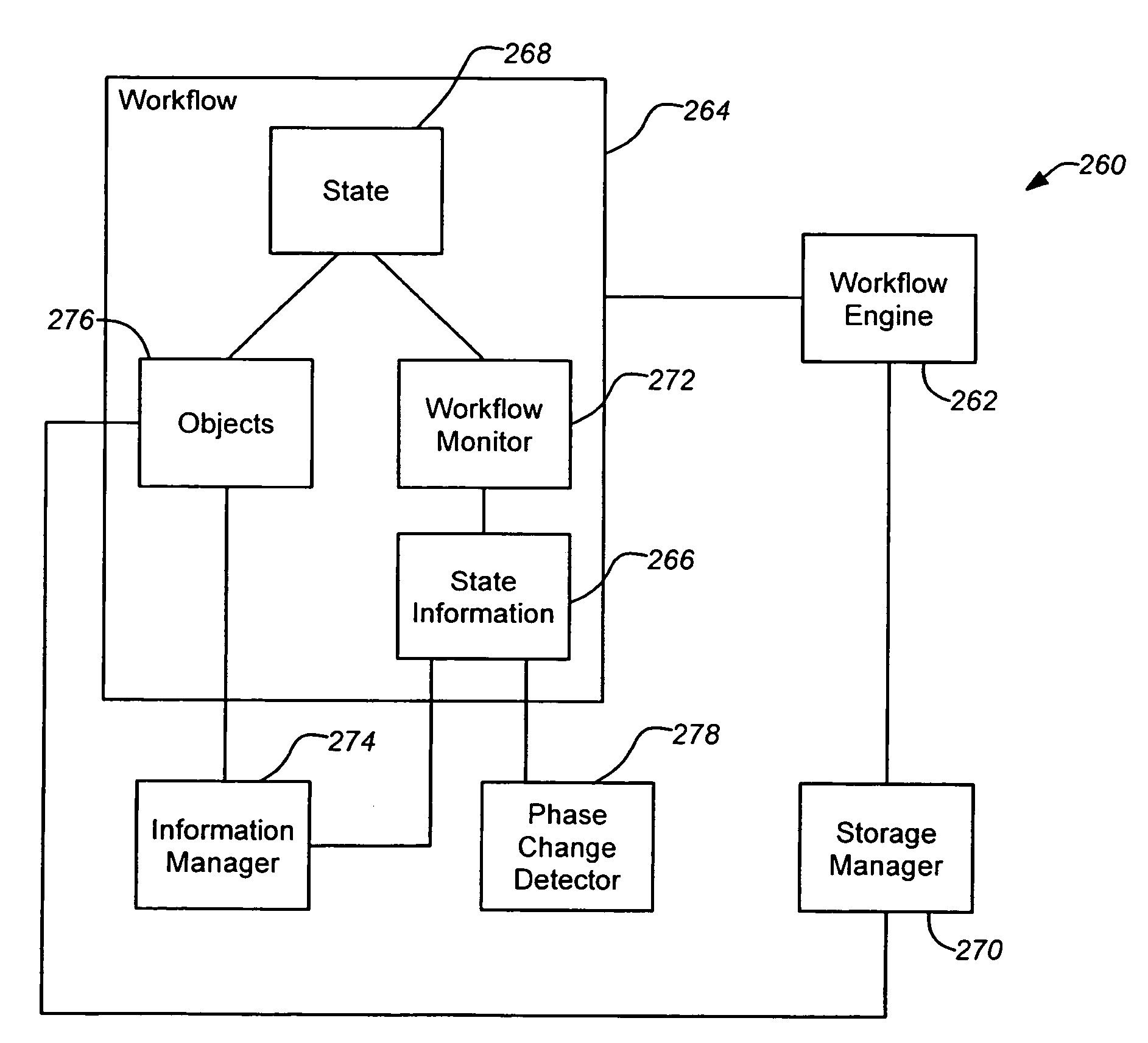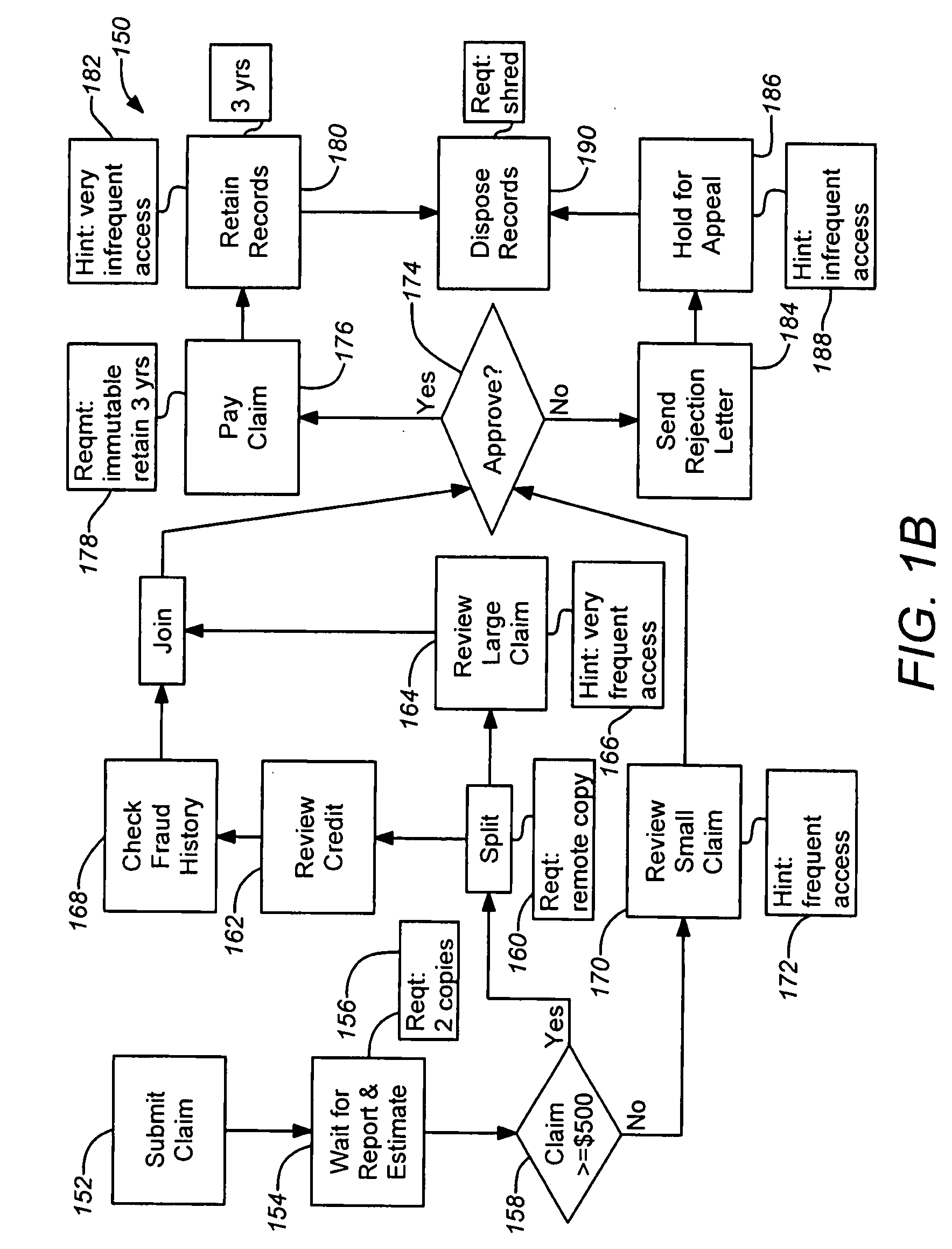System and method for workflow-driven data storage
a data storage and workflow technology, applied in the field of data storage, can solve the problems of limited effectiveness, ineffective management, and insufficient storage of huge amounts of resulting data, and achieve the effects of enhancing efficiency, efficient storage of data, and enhancing efficiency
- Summary
- Abstract
- Description
- Claims
- Application Information
AI Technical Summary
Benefits of technology
Problems solved by technology
Method used
Image
Examples
Embodiment Construction
[0031]1. Workflow and State Information
[0032]Embodiments of the invention provide a way to effectively determine the requirements and importance of a data object, such as a file or document, and to manage the object according to its determined requirements and importance. The importance of an object includes the likelihood that it will be used or used in the near future (i.e., that the object will transition to an expected state), or the value that it can bring to an organization. To achieve this, embodiments of the invention can use an associated workflow to associate management information, such as requirements and importance, with an object, and handle the object based on the associated management information.
[0033]Workflow refers to a means for information to flow seamlessly to the intended recipient and typically includes the means to route information, e.g. documents and memos, in a timely manner to users or groups of users having different roles. Workflow is an integral part ...
PUM
 Login to View More
Login to View More Abstract
Description
Claims
Application Information
 Login to View More
Login to View More - R&D
- Intellectual Property
- Life Sciences
- Materials
- Tech Scout
- Unparalleled Data Quality
- Higher Quality Content
- 60% Fewer Hallucinations
Browse by: Latest US Patents, China's latest patents, Technical Efficacy Thesaurus, Application Domain, Technology Topic, Popular Technical Reports.
© 2025 PatSnap. All rights reserved.Legal|Privacy policy|Modern Slavery Act Transparency Statement|Sitemap|About US| Contact US: help@patsnap.com



